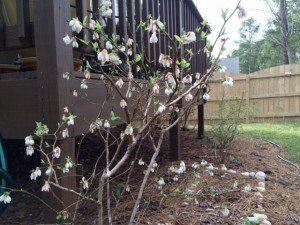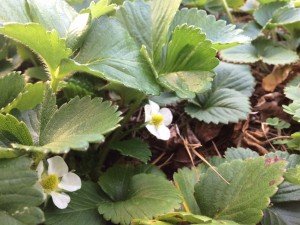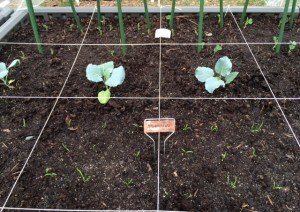One of my goals for the coming months is to find lessons for skills I want to either learn or improve upon. I had a head start a few weeks ago with a class offering by Whisk, a unique, local kitchen-everything shop in Cary (more about them in a bit).The class was Mastering Knife Skills, a two hour, hands on lesson taught by Ethan Hamme from the Messermeister company who was both knowledgeable and entertaining. The photos that follow are from another class Ethan taught and were generously provided by Whisk for my use here.One of my biggest take aways of the night was at the beginning of class when Ethan shared his thoughts on honing. You either get into the habit of doing it before you use the knife each time or you get into the habit of doing it after. He thinks it is easier to do it before, making it a step in the mise en place and therefore more likely to be remembered.The class was focused in particular on the chefs knife and its uses. We first learned proper grip and then dove right into different techniques for different vegetables.I am sure I could have found my way through my first julienne watching a YouTube video, but now I have actually done it. We then cut the julienne down to a fine dice called brunoise.An interesting component of the class was the assortment of chefs knives on the table. This afforded students the rare opportunity of taking different knives out for a test drive throughout the class and see what felt good in their hand. At the end of class I had to wait in line behind other students to check out with my two new chef/paring knives sets, so it looks like a win-win for students and store.Whisk was just opening its doors in Cary when I moved to the area a little over three years ago. By luck, I briefly met Dan, one half of the husband and wife owners, when we both spoke at the same event so I have known about and visited their site many times and knew they held regular classes. I had even looked at the class listings a year or so ago and thought, "I will have to do that sometime". And then a year went by.Let's all make 2017 be our "sometime"!
Read MoreCooking Up A Hurricane - Mozzarella (Part 2)
As a cook (and human being) I am much more comfortable in the zone where I am critiquing past performance and looking for areas for improvement over standing on the precipice of something I have never tried. To that end, one of my favorite phrases is the French culinary phrase 'mise en place", which means "putting in place" and is a practice used in recipes that benefit from having all the ingredients measured and prepared before beginning.For my first ever adventure into home cheese making, mise en place was required...and possibly wine...Soft-cheese making is pretty straight forward (for the practiced) but with some specific temperatures serving as prompts to move to the next phase. Since this was my first go at it, that translated into me constantly monitoring temps so as not to pass or miss an important temperature window.With the first attempt at anything there are questions...are my curds curdy enough? Is the mesh in my strainer too large (or too small) that I have curds filling the holes?But then magic! I made cheese!!In the end, like any new recipe, it went mostly well with a decent and edible result. Then I begin the process of #Kaizen - constant, incremental improvement:
The cheese was a little firmer than most of the purchased mozzarellas I am familiar with - did I over work the curd?
The cheese was good, but a little on the salty side - I need to cut the salt in 1/2 for the next attempt.
My mozzarella was a little more yellow than the milky white mozzarellas I buy - is that related to the milk I purchased, something I did...I need to spend some time on google...
My favorite recipes rarely began as they are today and I am happy to add cheese-making to the list that is being constantly improved and refined until it reaches the point of second nature.
Read MoreGetting Wired in the Garden
Early this spring I had high hopes when I reworked my square foot grids with outdoor nylon rope. It lasted only 2 seasons.The needles and leaves are a results of Hurricane Hermine's winds coming through earlier this weekend, but the nylon grid had disintegrated well before the storm.I spent some time in Lowe's yesterday finding what I hope will be the last grid material I need. I have tried coated wire before, but the wire was purchased for supports for climbing squash and was too stiff in the garden. This wire has a great blend of sturdy but flexible.This wire also marks a change in direction for grid color. I have always marked out my grids in white, liking the crisp contrast. This time I went with black, to blend into the soil visually.A note if you decide to use wire in your beds for grids or anything else - I specifically wanted a coated wire because uncoated may get pretty hot in the summer sun and burn the plants that brush up against it.Now that I am back on the grid (again), time to get my fall lettuce and spinach seeds planted!
Read MoreA Berry Short Haircut
Last fall I had a niggle as I watched the lush, green growth of the strawberries yellow in some places and brown in other. I made a cursory search for winterizing strawberries and fall strawberry preparation and did not find what I was looking for, so called it good and lived in ignorant bliss all winter.This year, as spring sprung and my strawberry plants reached an almost concerning level of denseness while thickly mulched with some of last years dying and crumbling growth, I searched again and still came up with nothing and went back to my bliss and the rest of my to-do list.Then a few weeks ago I saw a video from Curtis Stone visiting a farmer in New Zealand, who, by the way, fetched 661 lbs. of strawberries off of his 600 first year plants discussing between 3:55 - 6:05, cutting down the current year's growth to force the plant into new, disease and fungus free growth for next year.My June Bearing Strawberries are already thickly in bloom, covered in green strawberries and tonight I saw the first blush of pink. Since I cannot do anything else until the end of this year's growing season, I went back to my research and found that a slightly different search term (cutting back strawberries) yielded the result I was seeking.This is one of those bad news/good news things.Bad news: The only thing I can really do between now and the end of season when I can cut back the green growth and make clean beds for next year, pulling out the older plants, making room for newer growth, is hand cleaning some of the decaying leaves, using them for mulch on very different plants so as not to transmit any fungus or disease between cultivars.Good news: In this case, that persistent niggle is my good news. I am far from an expert and I don't hold the title Master Gardener, but I am beginning to have a real intuition, a sense of what might need to be researched and considered for my various plants. I do consider myself a pretty good researcher and on this one I missed my target more than once, but I am feeling good that I have an idea of which questions need to be asked and will listen even more closely going forward. Answers, clearly, may vary!#Kaizen
Read MoreSpringing Ahead
After a week of travel, timezone jet lag and leaping ahead an hour, I returned home to find my spring garden well underway. The blueberries and strawberries are already in bloom and hoping the 33 degree overnight currently forecast for Monday night doesn't damage them.
The blueberries and strawberries are already in bloom and hoping the 33 degree overnight currently forecast for Monday night doesn't damage them. The collards, cabbage and kale have been hardened off and were transplanted yesterday near the sprouting spinach, pak choy, lettuce and sugar snap peas.
The collards, cabbage and kale have been hardened off and were transplanted yesterday near the sprouting spinach, pak choy, lettuce and sugar snap peas. The 8 spears of asparagus that have been harvested so far have been well worth the 1 year wait and I hope some crowns that have not yet produced will begin to send up spears soon. In the meantime, I am becoming an expert on making a little asparagus go a long way in dishes.
The 8 spears of asparagus that have been harvested so far have been well worth the 1 year wait and I hope some crowns that have not yet produced will begin to send up spears soon. In the meantime, I am becoming an expert on making a little asparagus go a long way in dishes.
New Year's Resolutions (Then and Now)
For 2015 I set two gardening goals for myself - begin keeping a garden log and saving seed and I did pretty well on both of them. My 2015 garden log ended the year with 8 typed pages and containing details from pounds of tomatoes and serranos harvested to the date of the first and last blueberries. I used Word for Mac so I can keyword search in 2016 (and beyond) if I want to find when I planted the 3rd crop of edamame or when my squash and cucumbers were invaded by cucumber worms. I found I was more diligent about doing entries if I kept the document open on my second monitor at all times so when I began the 2016 garden log earlier this month detailing all the indoor starts for January, I continued with this practice.Prior to 2015, I had only saved my own cilantro/coriander seed and purchased everything else. At the end of 2015 I had saved 10 different varieties of everything from squash and chili peppers to flowers and tomatoes. My seed box, which has always been full of Baker Creek Heirloom Seeds packages is now peppered with the plain brown paper envelopes that I use for my own seed.For 2016 my two goals are saving even more of my own seed and mulching. Going from 1 to 10+ varieties that I saved seed from in 2015 is good, but I am growing over 53 annual varieties in 2016 so there is plenty of room to continue to improve in this goal.The Square Foot Gardening method I use places a heavy emphasis on compost but almost none on mulching. The SFG method recommends starting with a 33% compost mixture in the raised beds and continually adding compost as plants are removed and new plants added to each individual square foot, but no mention of covering the soil between and around plants. Soil science as well as observation have led me to understand that just as nature abhors a vacuum and will swiftly fill it, soil abhors being exposed and will cover itself with weeds if it must to protect it from the wind and the sun, allowing it to retain water better and reduce erosion.So for 2016 I will be experimenting with different types of mulches in my beds to see what works best, doesn't invite too many visiting pests and makes the plants and soil happy and healthy.Here's to getting better every year! #Kaizen



